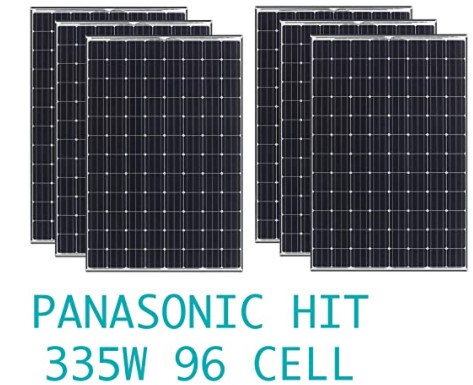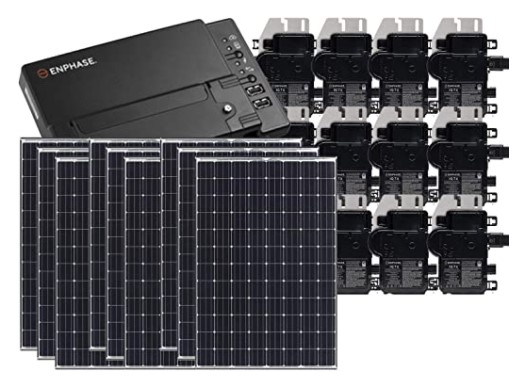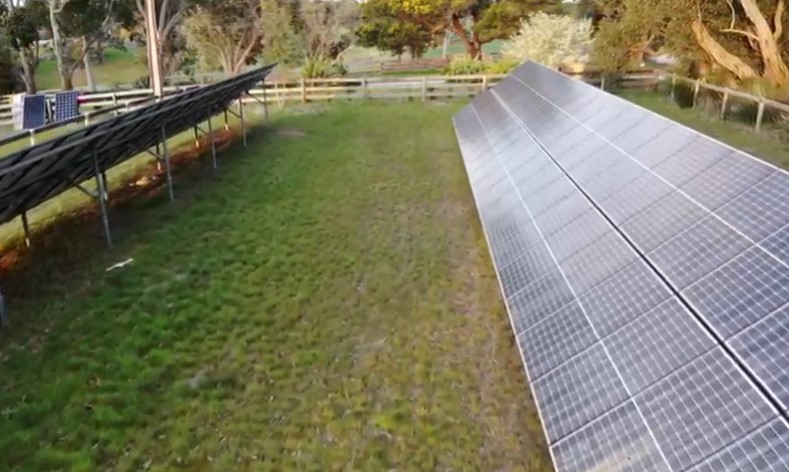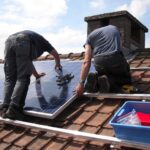Are you on the lookout for solar panels? We hear you. When you are new to a green lifestyle and wish to transition to go solar, it might feel like you are stepping into the twilight zone. As you evaluate your options and help you in the right direction, we’ll be telling you all about the popular Panasonic solar panels.
Every time more and more people turn to solar panels and see how this change allows them to create a simple, more efficient living space. With this type of energy to power your home, you can enjoy an unlimited power supply, and even if you want a portable option for your RV, you can enjoy most of the comforts of home with the right solar panels.
If you are looking to change solar energy, you may want to invest in a trusted brand that’s well backed up. Putting your money in big names like Panasonic and doing your research is the right move; after all, you do not want to get into solar energy unprepared. Continue reading and learn what you need to know about Panasonic solar panels.
Panasonic Solar Panels Review FAQs
Why choose Panasonic solar panels?
- Panasonic is one of the world’s largest consumer electronics manufacturers and an increasingly popular choice for U.S. homeowners installing solar. Panasonic’s heterojunction technology (or HIT) is included across their product lines, providing a unique take on the solar cell. Their HIT, HIT+, and HIT AC series are all high performers on EnergySage, with Panasonic the most quoted solar panel brand on EnergySage.
- Panasonic installed more than 4 million Panasonic modules across Europe and America, but the failing ratio is only 0.0044%.
- Their solar panels’ temperature coefficient of 0.258%/°C. This unique construction lets them produce more power at any high temperature where others may fail.
- Panasonic manufactures solar panels that are very compact and portable to place them in any complex roof shape.
- Each solar panel comes with a unique drain system that reduces water stain and ensures more prominent performance.
- They use heterojunction technology with ultra-thin amorphous silicon layers for higher output than any other panels.
What solar cell technology do Panasonic solar panels use?
The unique heterojunction (HIT) solar cells used by Panasonic in their solar modules incorporates both crystalline and amorphous solar technology to retain more power that is typically lost through conventional crystalline cells.
HIT, or heterojunction, solar cells are manufactured like a sandwich – a thin, monocrystalline silicon layer is layered between two thin amorphous silicon layers. The result is a high-efficiency, high-performing solar cell.
Are Panasonic solar panels any good?
Panasonic and LG Solar offer some of the best solar panels in the industry. They provide high quality, top efficiency, and very reliable panels, which is why they offer “premium solar panels. ”
Panasonic’s solar panels range in efficiency from 19.1% to 21.7%, and they have a materials warranty lasting for 25 years.
How much do Panasonic solar panels cost?
Panasonic solar panels cost between $2.44 and $3.10/W on the EnergySage Marketplace; that’s $14,640 to $18,600 for a 6 kW system, before the federal solar tax credit.
How long do Panasonic solar panels last?
Panasonic’s solar panels range in efficiency from 19.1% to 21.7%, and they have a materials warranty lasting for 25 years.
Where is the Panasonic solar panel made?
Panasonic HIT solar panels are manufactured at their factories in Malaysia and the United States. They have a factory in Buffalo, New York, where they manufacture panels for their own brand and their partner, Tesla.
How many watts is a Panasonic solar panel?
According to Panasonic, their solar panel is a 72-cell, 270-watt prototype built using crystalline silicon solar cells – the type most commonly used in rooftop set-ups.
Are Panasonic solar panels Tier 1?
Examples of Tier 1 solar panel manufacturers include SunPower, SolarWorld, Panasonic, LG, Trina, Jinko, and Canadian Solar. You can trust that their 25-year performance warranty will be honored, and importantly, you should choose reputable installers to install your Tier 1 panels.
Are Panasonic solar panels monocrystalline?
Panasonic HIT solar panels feature an innovative heterojunction cell structure made of monocrystalline and amorphous silicon layers.
Why did Panasonic stop making solar panels?
This year, Panasonic announced that it would end production at its Malaysian and Japanese factories by March 2022 instead of shifting its solar panel manufacturing to a subcontracted partner.
How to find the best price on Panasonic solar panels
The best way to determine whether Panasonic solar panels are the best solar panels for your home is to review multiple quotes with different solar equipment options before deciding. When you compare all of your options on the EnergySage Solar Marketplace, you’ll find the right combination of price and quality that meets your needs. Many of our qualified, pre-vetted solar installers offer Panasonic solar panels in their quotes to EnergySage users.
How are Panasonic solar panels different from other manufacturers?
Efficiency
The efficiency of your Panasonic solar panels will vary depending on the specific model that you choose for your system. While most solar panels fall in the 14% to 18% range, Panasonic panel efficiency can range anywhere from 19.1% to 21.7%.
Performance of Panasonic HIT panels
The temperature coefficient indicates how well your solar panel can handle less-than-ideal conditions. Like other electronic equipment, solar panels perform better when they are kept cool (ideally around 25° C/77° F). The temperature coefficient tells you how much your panel’s performance will change during hot sunny summer days.
For every degree above 25° C (77° F), your solar panel’s electricity production will decrease by its temperature coefficient.
Warranties
Most solar panel manufacturers offer a ten or 12-year materials warranty, but some higher-end solar panels come with a 12, 15, or even 25-year warranty. Panasonic provides a remarkable 25-year warranty against any defects in its solar panels.
Cost
The total price you pay for a solar energy system with Panasonic panels will vary depending on the other equipment (such as inverters and mounts) used in the installation, as well as the characteristics of your roof. To identify the prices range for Panasonic systems, we analyzed quotes from installers on the EnergySage Solar Marketplace that included Panasonic solar panels. Most Panasonic systems are typically priced between $2.44 and $3.10 per watt, comfortably in the mid-range for solar.
What’s different about Panasonic’s new line of solar panels, the EverVolt series?
Panasonic’s newest line of solar panels, the EverVolt series, don’t just use HIT solar cells; they use half-cut HIT solar cells. Half-cut cells are exactly what they sound like – photovoltaic solar cells that have been cut in half. By making the cells smaller, there are lower heat losses, which increases their efficiency.
Panasonic Solar Panels Review
Pros
- Impressive specs
- Excellent warranty
- Lower price than premium panels
- Reputable company
- Panasonic panels, specifically their EverVolt modules, have excellent performance specs and a great warranty. While their products’ performance falls just shy of premium brands like SunPower, the panels also come at a bit of a lower price.
- Plus, being that Panasonic is a large, reputable company, you can trust that they will be honoring their warranty should you need to file a claim.
Cons
- You can buy comparable panels at a lower cost
- A third party will manufacture the panels
- The most significant disadvantage to Panasonic solar panels is while they’re cheaper than SunPower, you can still find other solar panels that will meet your needs at a more reasonable price point.
- Another big thing to remember is that Panasonic recently announced it would no longer manufacture its solar panels. Instead, another company will take over manufacturing, but the panels will still have Panasonic’s name.
Treepublic High-Efficiency Solar Panels Panasonic
The 96-cell HIT+ N335 solar panel provides a powerful combination of increased module efficiency, energy savings, and durable long-term performance.
Featuring a 20% module efficiency and 335 watts per panel, N335 delivers an advanced renewable energy source with zero emissions for any home.
A temperature coefficient rating of -0.258%/°C, one of the lowest in the world, helps generate greater electricity output on the hottest days.

Features:
- Increased module efficiency
- Low-temperature coefficient
- Heterojunction technology
Treepublic High-Efficiency Residential Solar Panel Grid
Panasonic’s unique heterojunction technology uses ultra-thin amorphous silicon layers. These thin dual layers reduce losses, resulting in higher energy output than conventional panels.
The smart-grid-ready Enphase IQ 7 Microinverter series is built on the seventh-generation platform and achieves the highest efficiency for module-level power electronics.
Every IronRidge Flush Mount System component has been tested to the limit and proven in extreme environments: rain, wind, and snow. IronRidge’s rigorous approach has yielded unique structural features, such as curved rails, universal fastening objects, innovative tile attachments, and reinforced flashings.

Features:
- IQ Envoy
- Consumption Monitoring
- IronRidge Racking
Hopefully, our Panasonic Dolar Panel review was helpful for you; some readers asked us for a Hanwha solar panel review. Yes, in addition to the review we cover all the frequently asked questions.



